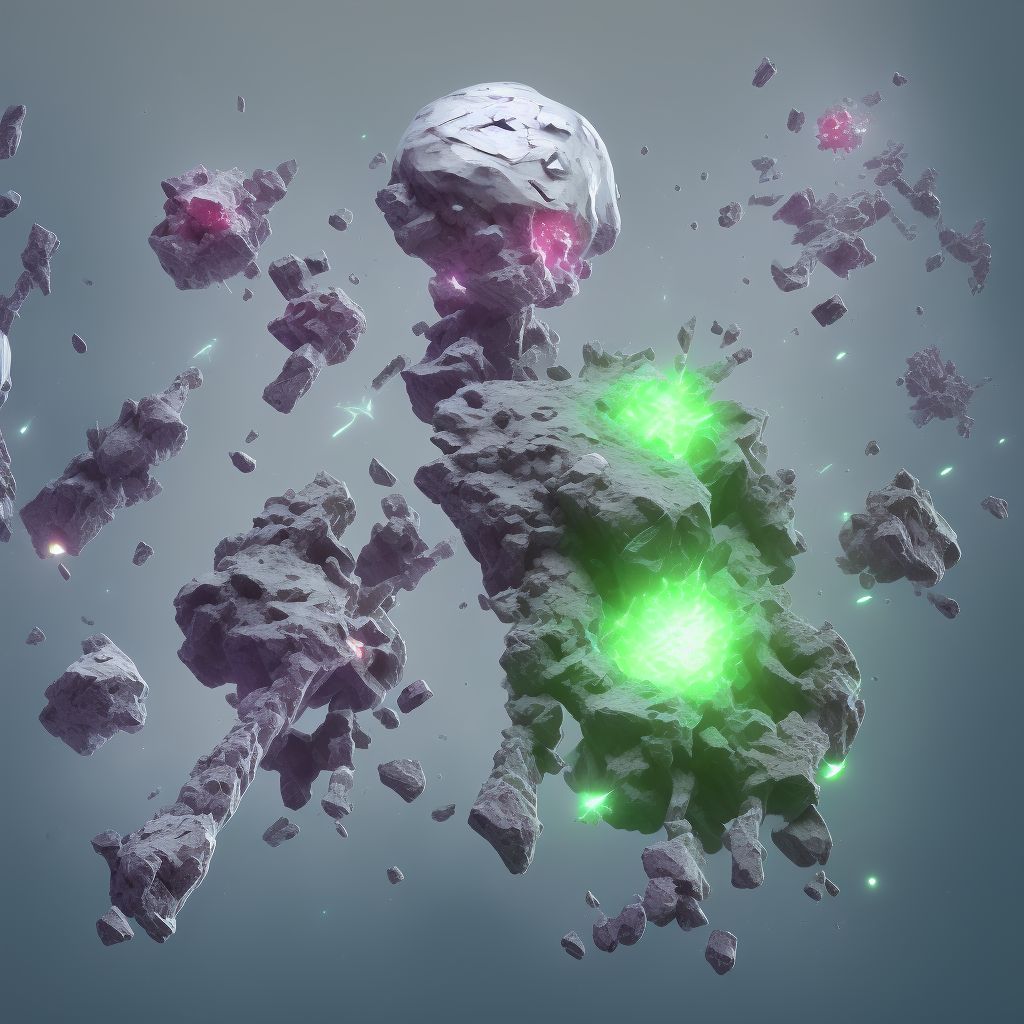
Displaced oblique fracture of shaft of unspecified fibula, subsequent encounter for open fracture type IIIA, IIIB, or IIIC with routine healing Save
ICD-10 code: S82.433F
Disease category: S82.433: Displaced oblique fracture of shaft of unspecified fibula
Displaced Oblique Fracture of Shaft of Unspecified Fibula: Understanding the Healing Process
A displaced oblique fracture of the shaft of the unspecified fibula can be a challenging injury to overcome. This type of fracture often requires immediate medical attention and proper management to ensure successful healing. In this article, we will explore the subsequent encounter for open fracture type IIIA, IIIB, or IIIC with routine healing, excluding treatment options.
- Understanding the Fracture: A displaced oblique fracture occurs when the fibula bone breaks at an angle, causing the broken ends to shift out of alignment. This type of fracture can be caused by various factors such as trauma, sports injuries, or accidents.
- Subsequent Encounter: After the initial encounter for the open fracture, a subsequent encounter refers to the follow-up visits for routine healing. During these encounters, healthcare professionals monitor the progress of the healing process and make any necessary adjustments to the treatment plan.
- Open Fracture Types IIIA, IIIB, and IIIC: Open fractures are classified into different types based on the severity of the injury. Type IIIA, IIIB, and IIIC open fractures are considered severe and often involve extensive soft tissue damage. These fractures require immediate medical attention to prevent infection and promote proper healing.
- Routine Healing: Routine healing involves the natural process of bone regeneration and tissue repair. During this phase, the fractured bone starts to form a callus, which serves as a bridge between the broken ends. Over time, the callus hardens, and the bone gradually regains its strength.
It is important to note that the healing process for a displaced oblique fracture of the shaft of the unspecified fibula can vary from person to person. Factors such as age, overall health, and the severity of the fracture can influence the duration of the healing process.
During subsequent encounters, healthcare professionals may recommend various interventions to support the healing process. These interventions can include physical therapy, pain management techniques, and lifestyle modifications.
In conclusion, a displaced oblique fracture of the shaft of the unspecified fibula requires diligent medical attention and proper management for successful healing. Subsequent encounters for open fracture types IIIA, IIIB, or IIIC focus on monitoring the healing progress and making any necessary adjustments to the treatment plan. By understanding the healing process, individuals can actively participate in their recovery and promote optimal outcomes.
Treatment of Displaced oblique fracture of shaft of unspecified fibula, subsequent encounter for open fracture type IIIA, IIIB, or IIIC with routine healing:
Treatment Options for Displaced Oblique Fracture of Shaft of Unspecified Fibula
When it comes to the treatment of a displaced oblique fracture of the shaft of an unspecified fibula, there are several options available. The specific course of action will depend on the severity of the fracture, the patient's overall health, and the preferences of the treating physician. Here are some...
To see full information about treatment please Sign up or Log in